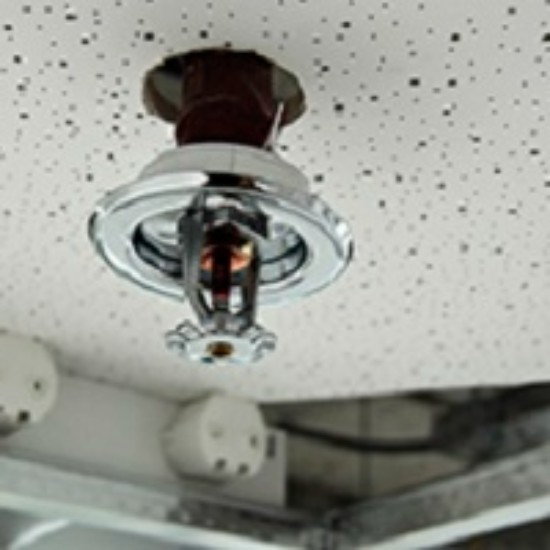
Life safety systems such as sprinklers, fire extinguishers, fire pumps, and fire alarms all have required tests and inspections to ensure they are running properly. Fire safety systems protect lives and property, and where they are required to be installed there is an authority (such as the AHJ or Fire Department) to inspect them and ensure compliance with state and federal laws.
While many people look at these inspections as a hassle, they actually benefit the building or business owners, and those that utilize the building.
Fire safety inspections offer:
- A safer shopping, work or living environment;
- Business and job security, as up to 80% of all small businesses that experience a large fire never reopen, and those that do reopen stand to lose much of their customer base due to prolonged closures;
- A building with an improved resale value, as many buyers will have a building inspected for fire or safety hazards, or areas not up to code.
- A potential for lower insurance premiums, some items on the inspection checklist may be required by both the fire department and your insurance company (such as an annual fire sprinkler and fire alarm inspection), many insurance companies provide premium reductions to businesses for a properly installed and maintained fire protection system.
For a complete list of fire safety devices and their required inspection schedules, check out our Inspections Guidebook. But below are a few of the most commonly missed safety device inspections.
1. Sprinkler Head Testing
If you have a Sprinkler System you should have the system regularly inspected and tested. But did you know that you also need to have the Sprinkler Heads tested?
A fire sprinkler head is the component of a fire sprinkler system that discharges water when the effects of a fire have been detected, such as when a predetermined temperature has been exceeded. It is critical for the sprinkler head to be clear of obstructions, as well as corrosion, paint or other foreign material, which may prohibit it from working properly.
Required Inspections: Every 10 Years for dry type sprinkler heads; Every 20 Years for Sprinkler Heads with a Fast Response Element; at 50 Years all Sprinkler Heads must be tested and from this point must be tested every 10 years; at 75 Years all Sprinkler Heads must be tested and testing must be done every 5 years.
Find out what type of Sprinklers Heads you have and how old they are to determine what testing you need to schedule! Call A1 or your Fire Protection company for help.
2. Sprinkler Standpipes
Standpipe systems are a series of pipe which connect a water supply to hose connections, basically an extension of the fire hydrant system. They are designed to provide a pre-piped water system for building occupants or the fire department. Standpipe systems are designed to provide fire protection water for hose lines in strategically placed locations inside a building or structure. They are most common in large floor area buildings, where most of the facility may be some distance from an outside entrance, or in multistory buildings to prevent long lengths of hose in stairwells and on the ground.
Required Testing and Inspections: If you have a Standpipe system in your building, it is required to be inspected annually. Various testing of equipment is also required, for example a flow test must be performed every 5 years. According to NFPA 25 2011 (6.3.1), a flow test shall be conducted every 5 years at the hydraulically most remote hose connections of each zone of an automatic standpipe system to verify the water supply still provides the design pressure at the required flow. Check out A1’s Standpipe Systems Ebook for more detailed information about Standpipes.
3. Sprinkler Cabinets
If you have a Sprinkler System, you are required to have a Sprinkler Cabinet with spare sprinkler heads, a sprinkler head wrench, and a list of all sprinkler head locations on site. NFPA requires a certain number of each type of sprinkler heads used in your sprinkler system to be stored on-site to allow for immediate removal and replacement of sprinklers that may have been operated or become damaged.
Required Inspection: According to NFPA 25 (5.4.1.5), a supply of at least six spare sprinklers shall be maintained on the premises so that any sprinklers that have been operated or been damaged in any way can be promptly replaced. A5.4.1.5 states that a minimum of two sprinklers of each type and temperature rating installed should be provided.
Tips for your fire inspection
Meet with your inspector before they begin to ask what devices they will be looking at. Provide the inspector with copies of all your system and equipment inspection, testing, and maintenance (ITM) reports. Have someone accompany the inspector to take notes on areas you need to address.
A1 is a leading expert on the latest technology in life safety. To find out more information or to ask a question, click here or call us at 1-800-859-6198.
